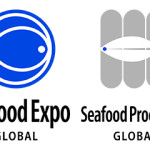Results of a new study into the market for mussels in France show that imports from outside the European Union have increased substantially over the past few years, particularly from Chile, with further growth expected.
Mussel farming in Chile has grown from a standing start in 2000 to become a force to be reckoned with, and now has an annual production of more than 300,000 metric tons (MT).
Seafood experts Via Aqua have continued the work of Marie Christine Monfort of Marketing Seafood in undertaking the report. Their investigations confirm that France is the largest European importer of live and frozen mussels, particularly frozen meats.
The report opens with a look at global mussel production, sales, and consumption, and at the distribution of and demand for different mussel species, particularly the blue mussel (Mytilus edulis) and the Mediterranean mussel (Mytilus galloprovincialis). Four other main species are grown in other parts of the globe.
It shows that world production of mussels has grown steadily since the mid-1970s to reach 2 million MT in 2016, according to FAO Fishstat. The average value in 2016 was around USD 2.00 (EUR 1.75) per kilo, compared with USD 0.50 (EUR 0.44) per kilo in 2000.
The five largest players are: China with 879,000 MT per year, Chile with 302,000 MT, Spain with 216,000 MT, Thailand with 115,000 MT, and New Zealand with 94,000 MT. The whole of Europe produces 470,000 MT, with Italy at 67,000 MT, France at 57,000 MT, and the Netherlands at 54,000 MT. South Korea, a relative newcomer to mussel-farming, now produces 55,000 MT per year.
Mussels represent nearly one-third of all aquaculture products sold in the European Union. European production has fallen slightly, while consumption has increased, hence the rise in imports from outside the European Union. Virtually all mussels used in prepared fresh tapas, tinned, and frozen products are imported.
A comprehensive analysis conducted by Via-Aqua looks at household purchases in Europe, with a focus on France, and which sector of society prefers which product. The report, which is available in English and French, details products, operators, and development. It also takes in distribution supply criteria and sets out a long list of products available to consumers during the summer of 2018, including live, fresh delicatessen, frozen, and tinned presentations. The report also notes the rise in popularity of new flavor profiles, particularly in the tinned section, along with a wide variety of soups, terrines, pates, and other products.
The study also contains an in-depth investigation of mussel products in 12 major French supermarkets, where a total of 208 products were identified on the shelves. These are listed by category, together with weight, price, processing, country of origin, certification, and label.
Taking a deeper dive into the French market, the report found that the majority of mussel consumption by French consumers occurs at home, rather than in restaurants, despite the ubiquity of “moules et frites” (mussels and chips) on French menus. Mussel consumption in France remains high and stable, thanks to the excellent image that consumers have of mussels. Most French citizens are familiar with the product and not afraid to handle and cook a live animal, the study found.
France imports live mussels from other European countries, particularly the Netherlands, Italy, and Spain. Smaller imports are taken from countries including England, Scotland, Ireland and Denmark. Imports of frozen mussels in various formats originate in Chile and New Zealand. The main supply channels are identified in the report.
Photo courtesy of Graham Horn/Geograph






